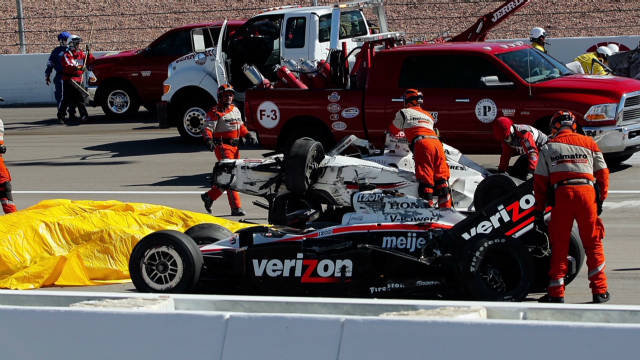FTA Hacker
New member

CNN) -- The tragic death of English driver Dan Wheldon after a horror race crash in the U.S. should lead to changes in the IndyCar division, according to Formula One legend Jackie Stewart.
Two-time Indy 500 winner Wheldon lost his life on Sunday after a multi-car collision on the 11th lap of the 2011 IndyCar World Championship's final race at the Las Vegas Motor Speedway.
Stewart, who won Rookie of the Year at the 1966 Indy 500 before becoming a three-time F1 champion, told CNN that such a tragedy will prompt the sport to re-evaluate the current safety measures.
"Unfortunately, when accidents occur, it's then that the more creative minds get moving on changing things," said the 72-year-old, who successfully campaigned for better safety precautions during his career. "Some of them may be simple to change, some of them may be more complicated, but surely change occurs.
Wheldon's death a watershed moment for IndyCar?
"A lot of people will be thinking, 'What are we going to have to do to avoid the Dan Wheldon accident?'
"Is the track big enough to accommodate 34 racing cars? Is the track too fast to have 34 racing cars within a mile-and-a-half racing circuit? Will that change?"
A lot of people will be thinking, 'What are we going to have to do to avoid the Dan Wheldon accident?'
Jackie Stewart
Stewart also questioned the wisdom of mixing drivers with varying levels of IndyCar experience in such a high-speed environment.
Racing pioneer remembers Dan Wheldon Emotional fan remembers Wheldon IndyCar drivers salute Dan Wheldon
"Will the caliber of driver be high enough to be able to control those cars at those kinds of speeds? In yesterday's race there were a good many drivers in there who were not regulars and were not fulltime IndyCar drivers. I think that's a consideration that has to be looked at."
Motorsport reacts to Wheldon tragedy
During Stewart's eight years in F1 racing for the BRM and Tyrrell teams from 1965-73, the Scot witnessed 11 driver deaths.
But the elite motorsport's last casualty was in 1994 when the legendary Brazilian Ayrton Senna crashed at the San Marino Grand Prix, while IndyCar has seen four deaths in the last 15 years.
"In the period that I was racing, there was a two out of three chance you were going to die if you lived for five years, and only one out of three you were going to live. In those days, motor racing truly was dangerous," Stewart said.
"In these last years it's been incredibly safe by comparison ... but that doesn't mean to say it's safe when you're traveling at speeds of more than 200 miles per hour."
Stewart said governing bodies cannot do enough to protect racers.
"If you're in motorsport, whether you're an administrator, a track owner, a governing body, a racing driver or a team owner, you've got to be thinking about safety. There are always improvements able to be made," he said.
"Modern technology, modern materials, it is available. It's just a question of being able to think out of the box and have preventative medicine rather than just corrective medicine."
